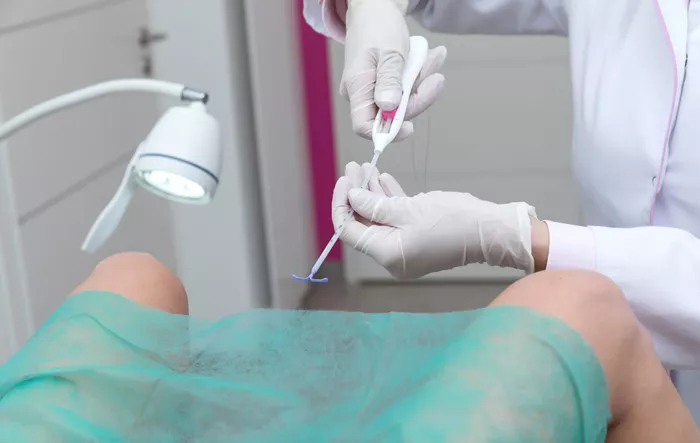Menopause is a natural part of life for women, marking the end of their reproductive years. It can bring about various symptoms, including hot flashes, mood swings, and changes in menstrual patterns. One common issue during this transition is irregular and heavy bleeding, which can be both uncomfortable and concerning. In recent years, hormonal intrauterine devices (IUDs), such as the Mirena coil, have been recognized for their potential benefits beyond contraception. They offer a promising solution for managing some menopause symptoms, particularly those related to bleeding and menstrual irregularities.
Introduction to the Mirena Coil
The Mirena coil is a small, T-shaped device inserted into the uterus by a healthcare provider. It releases a steady dose of a hormone called levonorgestrel, a type of progestogen. This hormone helps regulate the uterine lining, reducing menstrual bleeding and providing contraception. The Mirena coil is effective for up to five years, making it a convenient option for long-term symptom management.
How the Mirena Coil Works
Contraception: The Mirena coil prevents pregnancy by thickening cervical mucus, which blocks sperm from reaching the egg, and by thinning the uterine lining, making it less hospitable for implantation.
Hormone Regulation: It releases levonorgestrel, which helps stabilize the uterine lining. This reduces menstrual bleeding and can even stop periods altogether in some cases.
Menopause Symptoms: While it primarily addresses bleeding issues, some research suggests that progesterone alone might help with certain perimenopause symptoms like hot flashes and sleep disturbances.
Benefits of the Mirena Coil for Menopause
The Mirena coil offers several benefits for women experiencing menopause symptoms:
1. Reduction in Heavy Bleeding
During perimenopause, women often experience irregular and heavy menstrual bleeding. The Mirena coil can significantly reduce or even stop this bleeding, providing relief from one of the most bothersome symptoms of this transition phase.
2. Convenience and Long-Term Use
Once inserted, the coil works for up to five years without needing daily maintenance. This makes it a hassle-free option for managing symptoms over an extended period.
3. Localized Hormone Delivery
The Mirena coil delivers hormones directly to the uterus, minimizing systemic absorption and reducing potential side effects like weight gain or mood changes.
4. Protection Against Endometrial Hyperplasia
It provides protection against endometrial hyperplasia, a condition where the uterine lining thickens, which can be a precursor to cancer. This is particularly beneficial when used alongside estrogen therapy.
5. Flexibility in HRT Regimens
The coil can be combined with various forms of estrogen therapy, allowing for a tailored approach to managing menopause symptoms.
How the Mirena Coil Affects Menopause Symptoms
While the Mirena coil is effective in managing heavy bleeding and irregular periods, it does not affect the onset of menopause. Menopause is determined by the depletion of ovarian follicles, which produce estrogen and progesterone. The coil does not influence this natural process.
Menopause Symptoms Beyond Bleeding
Menopause brings a range of symptoms, including hot flashes, night sweats, mood swings, and sleep disturbances. The Mirena coil primarily addresses bleeding issues but may offer some relief from hot flashes and sleep disturbances due to its progesterone component.
Comparison with Other Treatments
Hormone Replacement Therapy (HRT): HRT involves replacing hormones to alleviate menopause symptoms. The Mirena coil can be part of a combined HRT regimen, providing localized progesterone delivery.
Combined Hormonal Contraceptives: These can also manage menopause symptoms like hot flashes and night sweats by providing both estrogen and progesterone.
Potential Side Effects and Considerations
While the Mirena coil is generally well-tolerated, it can cause some side effects:
Changes in Bleeding Patterns: Initially, women may experience spotting or irregular bleeding, which typically stabilizes over time.
Mood Changes: Some women report mood swings or depression, though these are not common.
Insertion Procedure: The insertion process can be uncomfortable for some women, but it is generally quick and straightforward.
Conclusion
The Mirena coil offers significant benefits for women experiencing menopause symptoms, particularly those related to irregular and heavy bleeding. While it does not delay the onset of menopause or address all symptoms, it provides a convenient and effective way to manage bleeding issues and can be part of a broader strategy for managing menopause symptoms. As with any medical treatment, it’s important to discuss the potential benefits and risks with a healthcare provider to determine if the Mirena coil is the right choice for individual needs.
Related topics:
- Does Serovital Help With Menopause?
- Does Birth Control Pills Help with Menopause?
- Can Birth Control Pills Help with Perimenopause?


